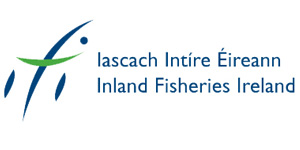Fish Stock Survey of Lough Beltra, July 2022
Lough Beltra is a picturesque lake located 8km north-east of Newport and 11km north-west of Castlebar, Co. Mayo (Plate 1.1, Figure 1.1). The lake is 2.4km in length and 1.6km wide, has a surface area of 403ha, a mean depth of > 4m and a maximum depth of 26.0m. The lake is categorised as typology class 4 (as designated by the EPA for the purposes of the Water Framework Directive), i.e., deep (>4m), greater than 50ha and high alkalinity (<20mg/l CaCO3).
Lough Beltra forms part of the Newport River Special Area of Conservation (SAC). The site consists of
the Newport River, its tributaries and Lough Beltra (NPWS, 2013). The site is selected as a SAC for
Atlantic salmon (Salmo salar) and freshwater pearl mussel (Margaritifera margaritifera), both species
listed on Annex II of the E.U. Habitats Directive. The Newport River and Lough Beltra are important
for spring salmon and grilse and contain important spawning areas. Broad-leaved deciduous
woodland is also found within the site, which is comprised of ash (Fraxinus excelsior), hawthorn
(Crataegus monogyna), downy birch (Betula pubescens), alder (Alnus glutinosa), willow (Salix spp.).
The kingfisher (Alcedo atthis), a species listed on Annex I of the E.U. Birds Directive, has also been
recorded along the Newport River.
Water quality in the lake is considered to be good; however, there are potential threats to water quality through nutrient enrichment, particularly from agricultural run-off. Afforestation within the catchment could also pose a threat to water quality (NPWS, 2013).
Lough Beltra gets an excellent run of spring salmon and, from June onwards, a run of grilse and sea trout (Salmo trutta). The sea trout average approximately 0.34kg, but fish of between 1.8kg and 2.3kg are taken annually (O’ Reilly, 2007).
The lake has been surveyed on three occasions since 2010 (2010, 2013 and 2016) (Kelly et al., 2011, 2014 and 2017). During these surveys perch (Perca fluviatilis) were found to be the dominant species present in the lake. Brown trout (Salmo trutta), sea trout, eels (Anguilla anguilla) and salmon were also captured during previous surveys.
This report summarises the results of the 2022 fish stock survey carried out on the lake using Inland Fisheries Ireland’s fish in lakes monitoring protocol. The protocol is WFD compliant and provides insight into fish stock status in the lake.
Topics: Lake Surveys 2022 , Lough Beltra |
